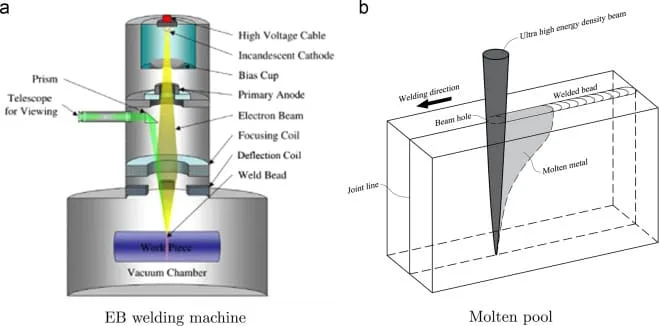Heat transfer is the process of energy transfer from one body to another as a result of a difference in temperature.
There are three main modes of heat transfer: conduction, convection, and radiation. In this article, we’ll focus on radiation and its role in heat transfer.
Radiation as a Mode of Heat Transfer
Radiation heat transfer refers to the transfer of heat by electromagnetic waves without the presence of a physical medium.
This mode of heat transfer is especially important in industrial and scientific applications where heat needs to be transferred over large distances or in a vacuum.
Unlike conduction and convection, radiation can occur in a vacuum and does not require a medium to transfer heat.

Modes of Heat Transfer
Heat transfer by radiation occurs when electromagnetic waves emitted by a hot body are absorbed by a cooler body.
The energy of the absorbed waves increases the temperature of the cooler body. The rate of heat transfer by radiation is proportional to the fourth power of the absolute temperature of the emitting body and inversely proportional to the square of the distance between the two bodies.
This means that the amount of heat transferred by radiation decreases rapidly with increasing distance.
Radiation Examples of Heat Transfer
There are many examples of radiation heat transfer in our everyday lives and in various industries. Some of the most common include:
Sunlight as a Radiation Source
Sunlight is the most important source of radiation in our daily lives. It is a combination of various types of electromagnetic radiation, including ultraviolet (UV) radiation, visible light, and infrared radiation. Sunlight is responsible for providing energy to all living things on Earth, and it also plays a major role in weather patterns and climate.
Coal as a Radiation Source
Coal is a fossil fuel that is widely used for energy production. When burned, coal releases heat and various types of radiation, including thermal radiation and ultraviolet radiation. The radiation from coal is not typically harmful to humans, as the amount released is relatively small compared to other sources.
Lightbulb as a Radiation Source
A lightbulb is a common source of thermal and electromagnetic radiation. Lightbulbs use electric currents to heat a filament, which in turn emits light and heat. The type of lightbulb used will determine the type and intensity of radiation emitted. For example, incandescent lightbulbs emit a lot of heat and relatively little UV radiation, while compact fluorescent lightbulbs (CFLs) emit much less heat and a small amount of UV radiation.
Campfire as a Radiation Source
A campfire is a source of thermal radiation, which is the transfer of heat through electromagnetic waves. Campfires produce heat by burning wood or other fuel, and this heat is emitted as thermal radiation. This type of radiation is not typically harmful to humans, as long as one keeps a safe distance from the flames.
Electronics as a Radiation Source
Electronics, such as computers and smartphones, emit a small amount of electromagnetic radiation in the form of heat and electromagnetic fields. This radiation is not typically harmful to humans, as the levels are very low. However, exposure to high levels of electromagnetic radiation from electronics can be harmful, so it is important to use these devices in a safe and responsible manner.
Pan on the burner as a Radiation Source
A pan on a burner is a source of thermal radiation. When a pan is heated on a burner, the heat from the flame is transferred to the pan, which in turn radiates heat into the surrounding air. This type of radiation is not typically harmful to humans, as long as one keeps a safe distance from the heat source.
Solar Equipment as a Radiation Source
Solar equipment, such as solar panels and solar water heaters, use the sun’s radiation to generate electricity or heat water. The sun’s radiation is collected by the equipment and used to power homes and businesses, or to heat water for use in showers, washing machines, and other applications.
Microwave Oven as a Radiation Source
A microwave oven is a source of electromagnetic radiation in the form of microwaves. Microwaves are used to heat food and other substances by causing the molecules to vibrate and generate heat. This type of radiation is not typically harmful to humans, as long as the microwave is used in a safe and responsible manner.
Candle as a Radiation Source
A candle is a source of thermal and electromagnetic radiation. When a candle is burned, heat is generated by the flame, and this heat is emitted as thermal radiation. Additionally, the flame emits light, which is a form of electromagnetic radiation. This type of radiation is not typically harmful to humans, as long as one keeps a safe distance from the flame.
Conclusion
Radiation heat transfer is an important mode of heat transfer that is used in a variety of applications. It is especially useful in industrial and scientific applications where heat needs to be transferred over large distances or in a vacuum. Understanding the principles of radiation heat transfer and its applications can help engineers and scientists design more efficient and effective systems.
Related FAQs
How does radiation heat transfer work?
The rate of heat transfer is proportional to the fourth power of the temperature of the emitting body and inversely proportional to the square of the distance between the two bodies.
What are some applications of radiation heat transfer?
Can radiation heat transfer occur in a vacuum?
This makes it especially useful in industrial and scientific applications where heat needs to be transferred in a vacuum.





